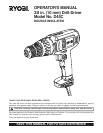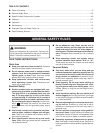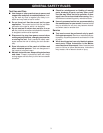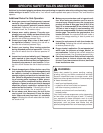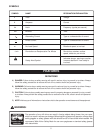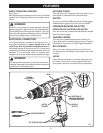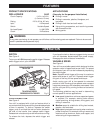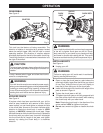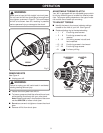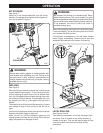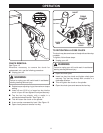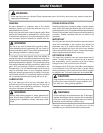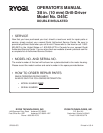
3
GENERAL SAFETY RULES
Tool Use and Care
■ Use clamps or other practical way to secure and
support the workpiece to a stable platform. Hold-
ing the work by hand or against your body is un-
stable and may lead to loss of control.
■ Do not force tool. Use the correct tool for your
application. The correct tool will do the job better
and safer at the rate for which it is designed.
■ Do not use tool if switch does not turn it on or
off. Any tool that cannot be controlled with the switch
is dangerous and must be repaired.
■ Disconnect the plug from power source before
making any adjustments, changing accessories,
or storing the tool. Such preventive safety mea-
sures reduce the risk of starting the tool acciden-
tally.
■ Store idle tools out of the reach of children and
other untrained persons. Tools are dangerous in
the hands of untrained users.
■ Maintain tools with care. Keep cutting tools sharp
and clean. Properly maintained tools with sharp
cutting edges are less likely to bind and are easier
to control.
■ Check for misalignment or binding of moving
parts, breakage of parts, and any other condi-
tion that may affect the tool’s operation. If dam-
aged, have the tool serviced before using. Many
accidents are caused by poorly maintained tools.
■ Use only accessories that are recommended by
the manufacturer for your model. Accessories that
may be suitable for one tool, may become hazard-
ous when used on another tool.
Service
■ Tool service must be performed only by quali-
fied repair personnel. Service or maintenance per-
formed by unqualified personnel could result in a risk
of injury.
■ When servicing a tool, use only identical replace-
ment parts. Follow instructions in the Mainte-
nance section of this manual. Use of unauthorized
parts or failure to follow Maintenance Instructions
may create a risk of electric shock or injury.



